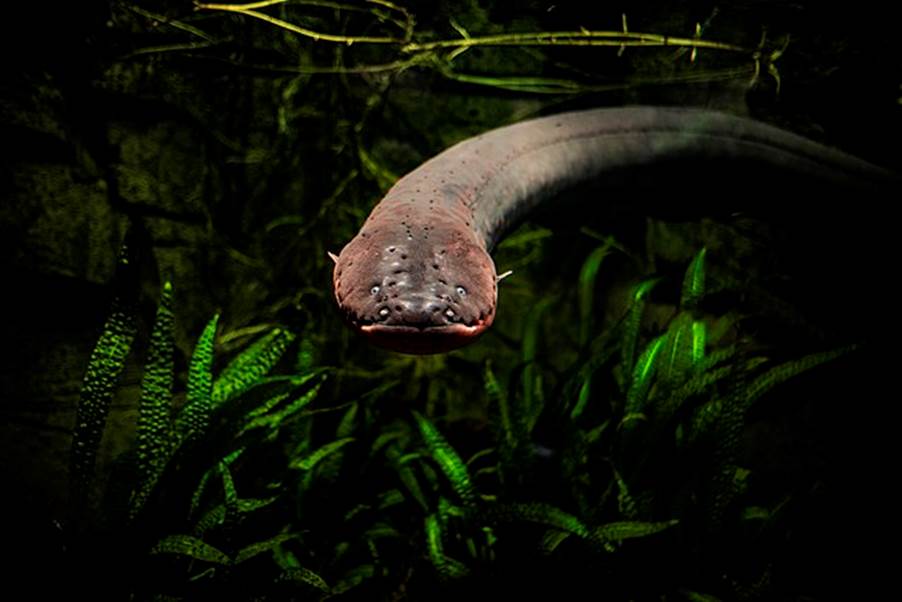How do Electric Eels Produce Electricity?

Electric eels have long fascinated scientists due to their unique ability to generate electricity. But how do electric eels produce electricity, and why? To answer this question, we will explore the findings from the paper “The Astonishing Behaviour of Electric Eels” [1].
How are They so Shocking?
Electric eels can produce electricity due to their electric organs. These organs are filled with thousands of cells called electrocytes [1]. These cells act like tiny biological batteries. When the eel’s brain sends a signal, all the electrocytes fire at the same time, each producing a small amount of electricity. When combined, these signals can add up to a massive jolt, sometimes as much as 600 volts [1]. For reference, 600 volts is enough to power most air conditioners.
Eels have three electric organs, and they use them to send out two main kinds of signals:
- Low-Voltage Pulses: These are gentle signals used for navigation, sensing objects, and possibly communicating [1].
- High-Voltage Pulses: These are strong shocks used for catching prey or defending themselves [1].
Stunning Ability
Electric eels have a remarkable ability to control their prey remotely using electricity.
· Prey Immobilisation: By emitting rapid sequences of high-voltage pulses, eels can induce involuntary muscle contractions in nearby prey, effectively paralysing them for easy capture [1].
· Prey Detection: Eels emit brief high-voltage bursts that cause hidden prey to twitch, revealing their location [1]. Once prey is detected, eels perform a "tactile strike," swiftly approaching and making contact while delivering sustained shocks to keep the prey immobilised during consumption [1].

Electrophorus electricus in Gdynia Oceanarium.jpg. By Oleksandr (Alex) Zakletsky.
Strategic Moves
Electric eels don’t just use brute force; they’ve got some shocking moves, too:
- Body Curling: The eel wraps around its prey and lines up its head and tail on either side [1]. This increases the electric power flowing through the prey [1], like plugging something into both ends of a battery.
- Repeated Shocks: While curling, the eel sends out multiple waves of electricity [1]. This tyres out the prey quickly [1], acting like a natural stun gun.
Eels Leaping Ability
Electric eels can also dramatically protect themselves. If threatened, they may leap out of the water and press their body against a predator, delivering a strong shock to scare it off [1]. This helps get more electricity into the attacker, making it an effective last-ditch defence.
Eels even defend themselves against horses! In the year 1800, an explorer, Alexander Von Humboldt, witnessed electric eels leaping out of the water to defend themselves against horses walking by [1].
Electrical Evolution
Scientists believe electric eels first evolved electric organs for navigating dark, muddy water [1]. Over time, they added stronger shocks for catching prey and fending off danger [1]. Instead of growing bigger organs, they developed clever behaviours like curling and leaping to make their shocks more effective [1].
Unanswered Questions
Even with all we know, scientists still wonder:
- Do other electric animals use the same tricks [1]?
- Could electric shocks be part of eel courtship or communication [1]?
- How do eels avoid shocking themselves [1]?
Now We Know
Not only do we now know how electric eels produce electricity, but we can see that electric eels are more than just shocking animals; they’re smart hunters and defenders who use electricity in amazing ways. From tracking prey to stunning attackers, they’ve evolved an electrifying way of life.
Curious about what other animals can do with electricity? Subscribe or become a member to stay updated for more answers to all your fascinating questions.
References
Reference paper “The Astonishing Behavior of Electric Eels”
